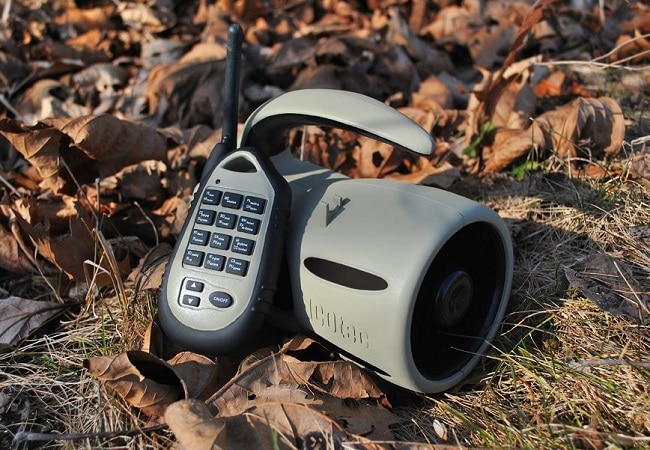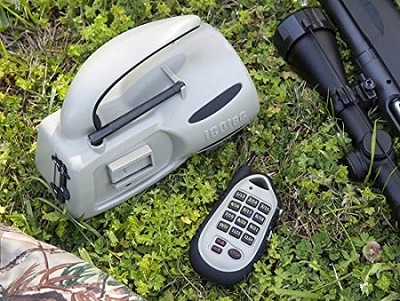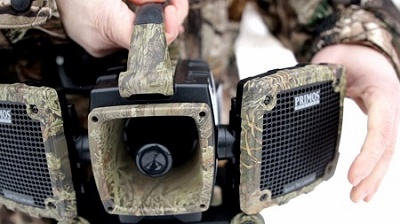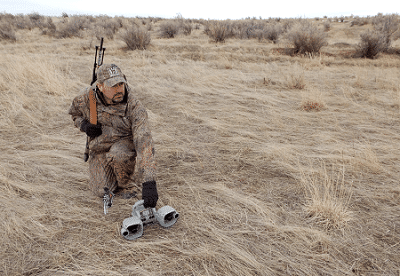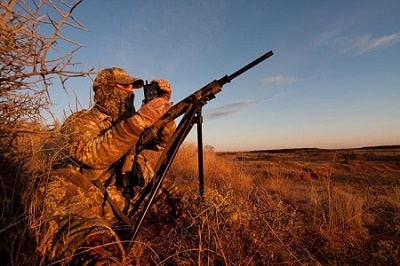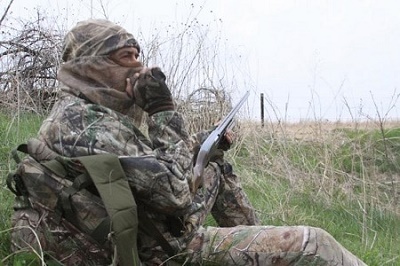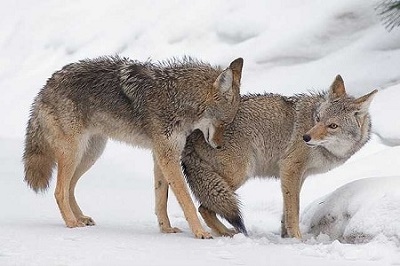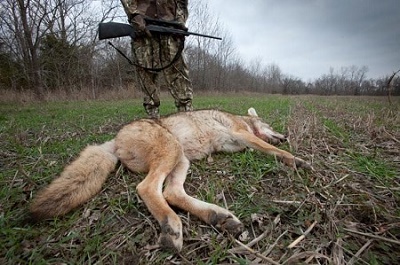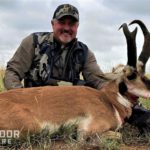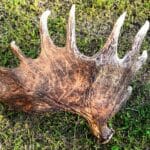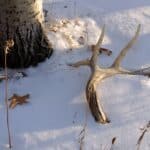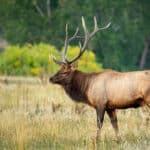An electronic predator call is one of your most important coyote hunting tools, second only to your rifle.
You could be naked but, with a gun and a caller, be able to call in and shoot a coyote.
I’d still recommend wearing ear and eye protection, though!
However, electronic calls are dang newfangled gadgets. How do you use them for best effect?
Choosing the Call
Well, in order to use an electronic call, you have to have one.
This means buying one, unless you are particularly adept at manufacturing your own electronics.
You can consult my electronic predator call buyer’s guide here.
If you want the shortened version, then what you want is an electronic caller with a remote control that can be used from at least 50 yards away.
It should have a variety of calls. You can get a model with built-in calls for easier use. Or, you can get a programmable model if you want to add more calls.
This can help in areas of high hunting pressure, as the coyote may have already heard the calls from a cheap, common unit.
Testing the Call
Once you have an electronic call, you need to master its use.
At home.
Keep the volume down and warn people you’re going to test the caller, because that distressed rabbit sound is terrifying!
This ensures not only that you know how to use your electronic caller but also that it works.
You shouldn’t have trouble if you buy a quality unit, but every manufacturer messes up from time to time. You don’t want to find out you had rotten luck when you’re setting up the caller in the field.
Setting Up the Call
A properly set-up electronic call will bring coyotes into your rifle sights.
First of all, be as stealthy as possible when placing your caller. You don’t want to spook the coyotes before you’ve had a chance at hunting them.
How Far Away?
Even though some callers boast a remote range of 300 yards, I wouldn’t set up your electronic call more than about 100 yards away.
Any further and you’ll have a much harder shot at the coyote. Remember, they’ll be investigating the noise, so even if they get on top of the caller they’ll still be that far away.
Closer can be better, though I wouldn’t set up a caller closer than 30 yards. You don’t want to risk spooking them with your scent.
Which Direction?
Your electronic caller should be upwind of you. Coyotes have an excellent sense of smell, so you don’t want your scent blowing in their direction.
If you can, place the caller in a position where, if you turn and look at your hunting spot, you’re looking toward the sun.
Coyotes also have a great sense of sight, but they have a hard time looking into the sun.
Then, make sure that your caller’s speaker is facing away from you. It should be aimed at where the coyotes will be coming from.
Coyotes prefer height and concealment, so they are likely to come from a hill covered in brush or other cover.
Adding Decoys
Adding a decoy can make the caller even more effective.
The simplest way to make a decoy is to attach a turkey feather to a stick. It’ll bounce around in the wind and catch the coyote’s eye.
You can also use motorized commercial decoys, some of which can be controlled from your electronic caller’s remote.
Either way, a decoy is a good idea, but not required.
Using the Call
Once you are back at your hunting spot, it’s time to start calling the coyotes!
Volume
Hunters have mixed opinions on whether or not you should start calling at maximum volume or not.
The idea behind starting at max is to immediately call in coyotes from as far away as possible
I’m not a fan of that because sudden loud sounds can spook any close-in coyotes. They’re probably closer than you think, even before using the call.
Some people recommend starting at one-half or even one-quarter volume. I recommend starting lower in more open areas and higher in terrain that’s boxed in by hills or woods.
Then, slowly increase the volume.
Once you’ve spotted a coyote, turn down the volume the closer it gets. The caller should be almost mute when the yote is within 100 yards.
Which Calls to Use
Coyote calls tend to fall into one of three categories:
- Potential food
- Territorial intruders
- Potential mates
An animal in distress brings in coyotes, regardless of the time of year.
Coyotes love to munch on rabbits, so a jackrabbit distress call is the go-to coyote hunting call. But this call can be overused, so you may need to try different animals if the coyotes are call-shy.
This often happens in areas used by other coyote hunters.
The beginning of the year, from January through the middle of March, is coyote breeding season. This is when they are the most territorial and also when they are looking to find a mate.
Coyotes mate for life, so female invitational calls are excellent for attracting only some males. Mated males and females won’t care. But unmated males will come running; a female wouldn’t invite him if it wasn’t safe!
However, you can still call other coyotes with howls and aggressive coyote sounds. This will make the local yotes think their territory is being invaded and they’ll come to defend their land.
Change Up Your Calls
No matter which type of call you use, your results will quickly plateau if you keep using the same one over and over again.
This is where programmable callers beat out the ones with a few built-in sounds.
Coyotes can learn that specific sounds mean danger and shy away from certain specific noises. They may also be able to pick up on a looping call, putting them into a cautious posture.
Also, you should be prepared to adapt to changing hunting conditions. Responding to coyote howls can be much more effective than trying the same jackrabbit distress sound over and over.
Calling After the Shot
You might think that the hunt ends after one shot. That’s not necessarily the case, though.
You might be able to call in more coyotes even after you’ve shot one. Don’t end a hunt after one pelt, and don’t move to claim the pelt until you’ve ended the hunt.
Something I’ve found to be effective is to play a wounded animal call after a shot. This can trick the coyotes into thinking you’ve shot that animal, and since you haven’t silenced it, they may be able to steal it.
I’ve even seen this behavior with raptors. You have to be swift when recovering waterfowl in the Alaskan wetlands because bald eagles know that gunshots mean dead ducks!
Conclusion
Coyote hunting requires a lot of patience and skill.
While much of that skill needs to be marksmanship, unless you want to burn ammo scaring off coyotes, you need to know how to call them in as well.
It takes time to learn how to call in coyotes, so don’t feel down if you mess up the first few times you hunt.
When you’re more skilled, you’ll be able to hold a conversation with these clever predators and trick them into falling for your trap.

